[Home Theater Network HDAV.com.cn] The room has a profound influence on the sound quality of music reproduction. In fact, the sound role of the listening room should be seen as another component of the broadcast chain. Because every listening room bears the symbol of its own voice, your system can produce the best sound only when the sound environment is good. An excellent listening room helps you get the best sound from a medium system, but a bad room can make a good system sound worse.
Fortunately, you can use a few simple techniques and instruments to greatly improve the listening room. The range of possibilities, from moving only your horn or listening position – a few miles, from the starting line to create a good listening room, there are many options between the two poles, including the addition of inexpensive, eye-catching sound processing products.
In many listening rooms, the most fundamental problem is the bad horn placement. Finding the right position for your horn is the most important factor in getting a good voice in the listening room. The horn placement affects the coordination of the high school bass, the amount and quality of the bass, the width and depth of the sound stage, the clarity of the midrange, the pronunciation and the audio. When you make a big change in the position of the horn, and then gradually fine-tune the position, you will hear the newly discovered correct music and seamless overtones into the sound. When you reach this condition, your stereo will become alive, and the most worthwhile is that it only takes you a few hours.
Before the special recommendation, let us summarize the six basic reasons for the sound affected by the horn.
1. The relationship between the horn and the listener is the most important. Between the listener and the horn, it should be triangular. Without this basic configuration, you can't hear good sound stages and audiovisuals.
2. The speaker is close to the wall to affect the amount of bass. The closer the speaker is to the wall or corner, the more the volume is.
3. The position of the speaker and the listener in the room affects the audibility of the room resonance pattern. The room resonance pattern is an enhancement of several frequencies that creates a peak in frequency response.
A booming sound is added to the sound. When the room resonates less, the interpretation of the bass will be more complete and the midrange will increase. (The room resonance style will be discussed later.)
4. The speaker moves to the room, the better the sound stage - especially the depth.
5. Listen to the high impact.
6. Angle adjustment (telephone face to listener), affecting the coordination of high school bass (especially the amount of treble), sound stage width, audio and video focus.
Let us examine the details of these factors:
1. The relationship between the speaker and the listener
The most important factor in getting a good voice is the geometric relationship between the speaker and the listener (we are not bothered by the room problem). The listener should sit in the middle of the two speakers, and the distance from the speaker should be slightly larger than the distance between the two speakers. . Although this is not a stiff and fast rule, you should actually sit in the middle of the horn. If you don't have this basic relationship, you can't get a good sound stage from the system.
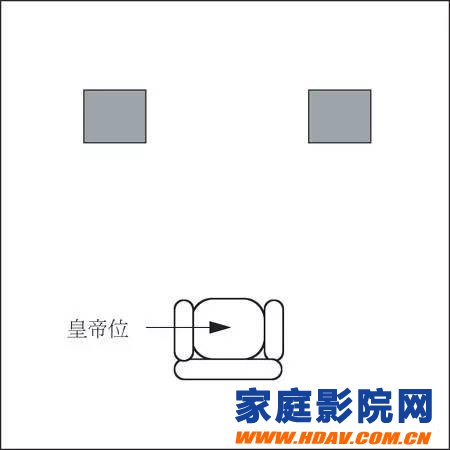
Figure 1 The listener should sit in the middle of the horn and equidistant from each horn.
Figure 1 shows how you can arrange the position of the horn, listening to the position - equidistant from the horn, slightly farther than the distance between the two horns, commonly known as "the emperor." This is the approximate location for the best focus and sound. If your seat deviates from the emperor's position, the sound stage will circulate around a horn, and this condensing effect will vary from horn to speaker; some horns will be wider.
Set the distance between the two speakers to be exchanged between the wide sound stage and the clear center audio. The wider the speaker is divided (assuming the same listening position), the wider the sound stage. If the speaker is turned on more, the middle image will be weakened or even disappear. If the speaker spacing is too narrow, the sound stage width will shrink.
The best listening angle will produce a clear central audio and a wide sound stage. You can experiment with the angle and move the audition chair back and forth. There may be a position where the central audio image condenses and presents a solid and accurate positioning in the center of the horn. . Select a single singer and simple accompaniment music to set the speaker spacing and determine a clear center audio.
One factor that considers setting the angle is the relationship with the room. The speaker and the listener can also have a geometric relationship, the speaker spacing is reduced, and the listening distance is also reduced. Or the speaker spacing is extremely separated and the listening position is also far away. The acoustic character of the listening room has a degree of influence on the sound, which is a long-distance listening position, which is larger than the close distance. That's because you listen to more sounds coming directly from the speakers, and less reflections from the walls of the room. Therefore, the farther you sit, the greater the sense of space in the sound, the closer you sit, the more direct sound, and the more immediate the musical performance. Some speakers require a large distance to allow individual individual sounds to blend together. If you are close to the horn, there is a big difference in the coordination of high, medium and low sounds. You should sit at a location far from the horn.
2. The amount of bass affected by the wall
The room environment has a great effect on the overall coordination of the high, medium and low sound of the horn. When the horn is placed close to the wall, the reinforcement of the bass (called room gain) will appear, and the weight of the musical performance will be increased. Some speakers are designed to be close to the back wall (the wall behind the horn), and this enhancement is used to achieve the natural coordination of the high and medium bass.
If these speakers are far from the back wall and close to the center of the room, the sound will be thinner. Others, at least 3 inches from the back and side, otherwise the sound will become thicker and heavier. If the speaker placement is limited, you have to make sure that you buy the one.
When the horn is close to the wall. The bass energy is reflected back into the room, basically in phase with the speaker output, which means that the low frequency directly and the reflected wave enhance each other, producing more bass. Figure 2 shows the difference in frequency response of the frequency response picture in the no-sound room (no reflection room) and the normal room.
As shown in the figure, not only the bass boost, but also the low frequency extension of the speaker. Close to each side of the speaker enhances the output of the horn bass. The horn is placed close to the corner and more bass is heard.
The relationship between the position of the horn and the wall behind it also affects those frequencies that will be enhanced. The correct placement will not only extend the low-frequency response of the horn, but also compensate for the natural attenuation and avoid the peaks and dents of the frequency. Improper placement can cause uneven frequency response and render bass. That is, some frequencies are enhanced and corresponding to other frequencies, so that the reproduction of the bass is not correct.

Figure 2 Comparison of speaker frequency response in a non-sounding room and indoors
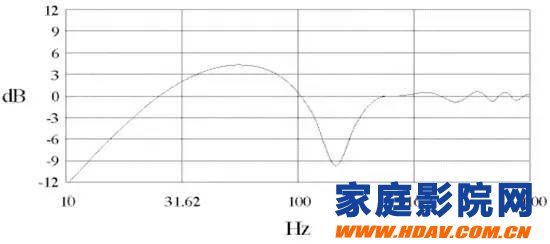
Figure 3a The speaker is at the same distance from the back wall and the side wall.
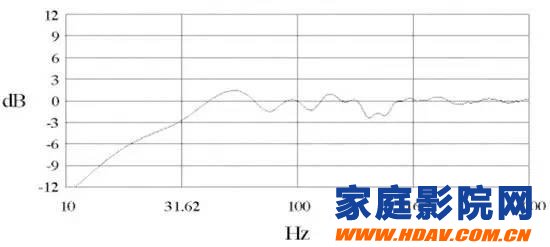
Figure 3b The speaker is different from the rear wall and the side wall.
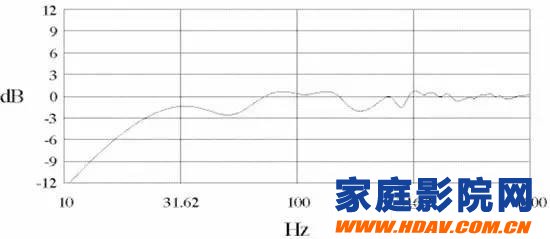
Figure 4 shows the same speaker in Figure 3, with different frequency response in different rooms (provided by Avalon Audio)
Figure 3a is the indoor response diagram of the horn (the response of the horn is changed by the listening room) when it is placed equidistant from the rear, side wall. Remember the V-shaped 10 dB gap (energy reduction) at approximately 200 Hz with peaks concentrated at 60 Hz.
The result will be bass boost, medium to low and thin. Moving the horn makes the distance from the back wall and the side wall different, which makes the response smoother (Fig. 3b). The same horn response is shown in Figure 4 in different room locations.
These figures illustrate that the speaker's room position affects the low frequency response. The horn should be positioned at a different distance from the rear wall. A rule of thumb: the difference between the two should not be within 33% of each other. For example, if the horn is 3 离 from the side wall, it must be at least 4 离 from the back wall.
Many horn factories will mark the correct distance from the back wall and the side wall. The test mark refers to the distance from the bass cone to the wall. According to the recommendations of the speaker factory, the position is set and then the experiment is started.
Finally, how far the horn is from the side wall will affect the reflection of the side wall. The closer you are to the side wall, the more the reflected sound of the side wall that reaches the listener - this is not a good thing. If you follow the instructions later in this chapter and put the horn close to the side wall, there will be no significant impact like a wall without treatment.
3. The position of the speaker and listener, affecting the room style audibility
In addition to deepening the bass extension, the low-tone sound is smooth, the correct speaker position is placed, and the room resonance style is reduced. The room resonance pattern, discussed later in this chapter, is the enhancement of several frequencies, the peak of the frequency response, and the room mode also produces standing waves, which are the high and low pressures that are stuck in the room, which will stain the sound. The type of standing wave in the room is determined by the size of the room and the location of its sound source. The speakers and listeners are arranged in the best position for a smoother low frequency response.
A well-known rule of thumb is that for the best low-pitched sound, the distance between the horn and the back wall is one-third of the length of the room. If there is no way, try one-fifth of it. These two positions slow down the standing wave and help the horn to merge with the room. The ideal location for the listener in the room is two-thirds.
Start with this basic configuration, then move the speakers and listening chairs in a microstep to play more bass music.
Listen to the smoothness and extension of the bass, and the degree to which the bass blends with other frequencies. When you find the flatter position of the speaker bass, you should also hear the improvement of the midrange clarity and resolution.
An excellent signal for evaluating indoor bass and midrange sounds, developed by Sound Science Corporation (ASC), called Musical Experiment Sound (MATT). This particular pitch gradually rises and sings, with a quiet interval. Ideally, you should hear the snoring and intermittent silence. If you listen to it with headphones or with your ear close to the horn, each çŒ sound is clearly heard, but when the sound is changed by the listening room, some rising çŒ pronunciation bands will be contaminated or tampered and displayed in the listening room. These frequencies are problematic. Moving the horn and listening to MATT, you can easily find the best working position in the room. (The MATT signal is available in the Stereophile test piece CD2. It also explains in more detail how to use this unique test signal.) The best way to find the speaker and listening chair position to reduce the standing wave method is a computer program called "TheListeningRoom". Acting by SittingDuckSoftware, you can contact AudioAdvisor (800-942-0220) for more information. This program asks you about the size of the room, the speakers and the listening position. The frequency and amplitude of the room resonance mode when the listening point is configured. When you are in the program, moving the speakers and listening to the location, the screen will show the effect of the real playback, so the most appropriate speaker and listener position can be found. "TheListeningRoom" is highly recommended for speaker placement.
4. The distance from the back wall affects the sound stage
Usually, the farther the horn is from the back wall, the deeper the sound stage. The deep and wide sound stage is rarely produced on the horn near the back wall. Pulling the horn back a few times will cause a difference between the bad and the spectacular. Unfortunately, many living rooms cannot allow the speakers to penetrate the room. If the speakers must be close to the back wall, the back wall should be able to absorb sound.
5. Listening to the harmony between height and high school bass
Most of the speakers, when the listening height changes, the frequency response also changes. These changes affect the mid-highs, not the balance of the bass. Typically, when your ears are at the same height as the tweeter, or when the tweeter axis is online, the horn sounds the brightest (in other words, the highest treble). Most of the tweeters are positioned between 32 å‹ and 40 从 from the floor to match the typical listening height. If you have an adjustable office chair, it's easy to hear the effect of listening to the axis and the coordination of the high school bass.
Different horns vary greatly due to the degree of change in height. Some models have a large degree of tolerance, only to hear a little difference, and in addition, only straighten the back when listening, can show a large change in the balance of high and low bass. Choose a listening chair and let your ears become the best axis to help you get a good balance.
The difference in response is easy to measure. A typical set of horn tests, including a set of response curves measured in various axes, the axial center response (usually the treble axis), is standardized to be a straight line, and the other Curve, indicating the difference between the axis and different heights.
6. Internal adjustment angle
To adjust the angle, position the horn inside to point to the listener instead of facing forward (see Figure 5). There is no rule for the internal adjustment angle, and the most appropriate amount varies greatly with the horn and the listening room. Some speakers need to be angled internally, and some are best facing forward. The internal adjustment angle affects many situations of music performance, including the balance of middle and high notes, the focus of the sound stage, the sense of space and directness.
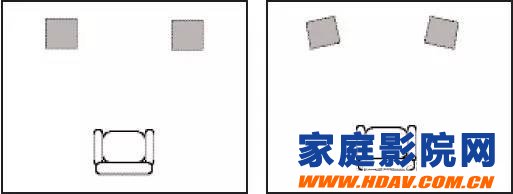
Figure 5 speaker positioning has no internal adjustment (left), there is an internal adjustment (right).
Most of the speakers, when they are directly on the axis, are the brightest and direct. At the listening position, the amount of treble increases within the angle. Excessively bright speakers, often with a horn facing forward, to tame. Some models do not need to be adjusted internally. If the axis is facing the listener, the sound will be too bright.
An angled internal adjustment will increase the ratio of direct, reflected sound. That is because the angled inner speaker releases more direct energy to the listener and less energy is projected into the room. The sound reaches the surface of the room and reflects before reaching the listener. The listening room has a reflective side wall and the horn angle is internally adjusted for a clear benefit. Moreover, the amplitude of the side wall reflection is greatly reduced due to the angle adjustment. Conversely, reducing the angle of the internal adjustment, increasing the reflection energy, plus the sense of space and air, reducing the angle of the internal adjustment can carry out the sound stage, creating a sense of surround.
Similarly, angular adjustments tend to improve the focus of the sound stage, as well as the clarity of the sound. When the angle is adjusted internally, many speakers provide a more coherent, sharp line of sound. Audiovisual images are more clearly defined, compact, and robust, rather than diffuse, lacking a specific spatial orientation, and preferably angled to the inner tune, often with too much treble, and exchange adjustments with strong central audiovisuals. Too many angles are adjusted internally, and the sound stage is well focused. However, the sound performance is often too bright, there is no angle adjustment, the treble balance is smoother, but the sound image is blurry.
The internal adjustment of the angle also affects the width of the overall performance scale. Without an angular adjustment, a large, awkward, but less precise sound stage will result. The outline of the instrument is less clear, but the scale of the performance is larger and wider. The horn angle is adjusted to reduce the display size of the sound stage, but it will bring a more accurate audio configuration. Then, the amount of angle adjustment is determined by the speaker, room, and personal preference. Nothing can replace the audition, adjust the angle, and then listen.
It is very important that the angle of each speaker is the same. This is the easiest to achieve, and can be obtained by measuring the back wall to the trailing edge of the horn. This distance varies with the degree of angle adjustment. The other speaker repeats the same procedure and adjusts the internal adjustment angle so that the distance matches the first speaker. Another way to determine the same angle is to sit in the listening position and observe the inner edge of the horn. You should see that the amount of the side panels of each speaker should be the same. The same angle is adjusted internally, which is very important for the sound stage. Because the frequency of the horn changes with the angle of the internal adjustment, the same frequency response is emitted from the two horns, and the placement of the accurate audio and video on the sound stage can be said to be an important facilitator.
7. Two-phase and two-pole speakers
The two-phase speaker produces two sounds before and after. The electrostatic horn is a two-phase horn. Because the diaphragm is placed in an open space, not in the speaker box, the same sound is emitted before and after. The sound wave behind the two-phase speaker is in anti-phase with the previous sound wave. That is, when the diaphragm advances and a positive sound pressure is generated in front of the diaphragm, a negative sound pressure is generated behind the diaphragm.
A typical two-pole speaker, in front of and behind the speaker box, uses a series of traditional speaker units, the sound waves of the two-pole speakers, in phase with each other. The difference between the two-phase and two-pole speakers is that the front and rear sound waves of the two-phase horn are reversed, and the front and rear sound waves of the two-pole horn are simultaneously.
When determining the position of the two-phase horn, the most important consideration is that the back wall of the horn has a greater impact on the sound than the traditional point source horn (direct energy only has one direction). Conversely, how the side wall is handled is less important for a two-phase horn because it emits very little energy to the side wall.

Figure 6 RPGSkyline diffuser, effectively dispersing sound. (provided by RPGDiffusorSystems, Inc.)
Usually, the two-way horn likes the back wall that will be reflected, and the horn has some diffuser behind it to dissipate the reflected energy. The highly sound-absorbing back wall will destroy the design of the two-phase speaker - you want to hear useful reflection energy. If the wall is flat and the surface cannot disperse the sound, the reflected sound will combine with the direct sound, resulting in a reduction in the depth of the sound stage.
The bookcase placed directly behind the two-way horn helps to spread (scatter) the sound waves behind it, and is useful for rock fireplaces, furniture and other irregular objects. The ASC tubular sound absorber can be placed directly behind the two-way horn with the reflective side facing outward. You can also try a variety of RPG diffusers, RPGSkyline diffusers (Figure 6), which are biphasic speakers that are ideal for diffusing sound waves behind. These 2 å‘Ž squares are extremely effective for dispersing sound and can be attached to the wall or to the gantry. For each floor-standing horn, about two or three Skylines are stacked vertically and placed directly behind.
You still need to deal with the side walls so that you can absorb the reflections of the two-phase speakers. However, its narrow radiation pattern, affected by the degree, is not as great as the source speaker. In particular, when the angle of the two-phase speaker is turned inward and turned to the listening position, the sound is best to listen. Similarly, two-phase loudspeakers have very little vertical spread, meaning that they are rarely pointed to the ceiling or floor.
The two-phase speaker also needs to be placed in the center of the room than the traditional point source speaker. You can't expect to get a big and deep sound stage when you put the speaker close to the back wall. Be mentally prepared and give the vast listening space to the two-phase speaker.
8. Horn placement summary
The horn placement is the only thing you can do and most importantly to improve the sound of the system. It is free and helps to exercise listening skills, with the same electronic equipment and speakers, to distinguish between bad and excellent sound. Before you spend money to upgrade your equipment and handle the sound field, make a good horn to understand your system's potential. After finding the speaker, it is best to place it. Then, install the carpet nails (if any) provided by the manufacturer, adjust the level of the nails so that the speakers will not shake, and the weight of the speakers should be all four (or three) feet. Nail bearing, if your floor is made of wood, in order not to be damaged by the nail, put a metal round gasket under the nail and often supplied with the horn.
You have seen the placement of the speakers, providing precise, independent control over the different aspects of musical performance. You can change the distance between the horn and the back wall and the side wall to control the quality and quantity of the bass. The perceived resonance of the room can be found by looking for the best position of the speaker and the listening chair. The balance of the treble can be adjusted by the height of the listening and the angle of the horn. The focus and width of the sound stage can easily be changed by adjusting the angle of the speaker. Move the horn to the center of the room and the depth of the sound stage will increase. Want to get the best sound in the listening room, the positioning of the speaker is a powerful means. You don't have to spend a penny to make good use of it. More fresh and fun home theater information, please pay attention to home theater network (WeChat: cnhifi) http://, the country's most influential home theater audio player interactive media website.
Note: This article is transferred from HIFI.
Air Purifier Hepa,Plasma Air Purifer,Air Purifier Electrostatic,Air Disinfection Machine
Dongguan V1 Environmental Technology Co., Ltd. , https://www.v1airpurifier.com